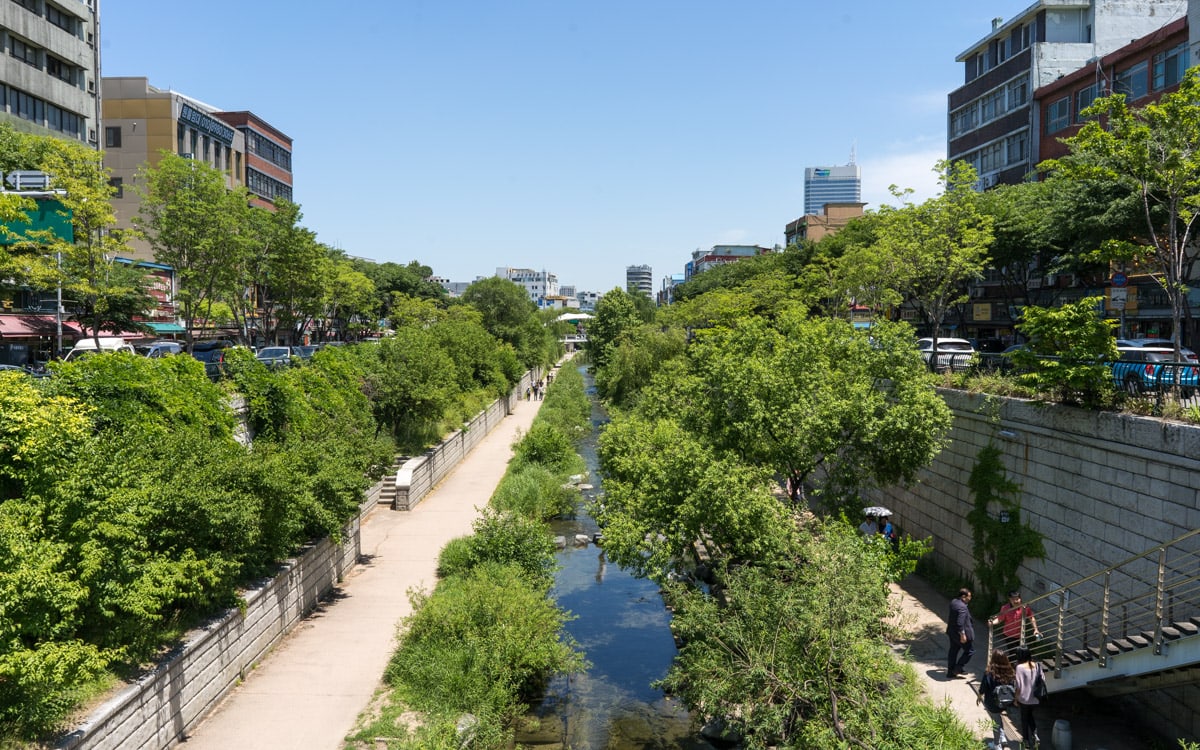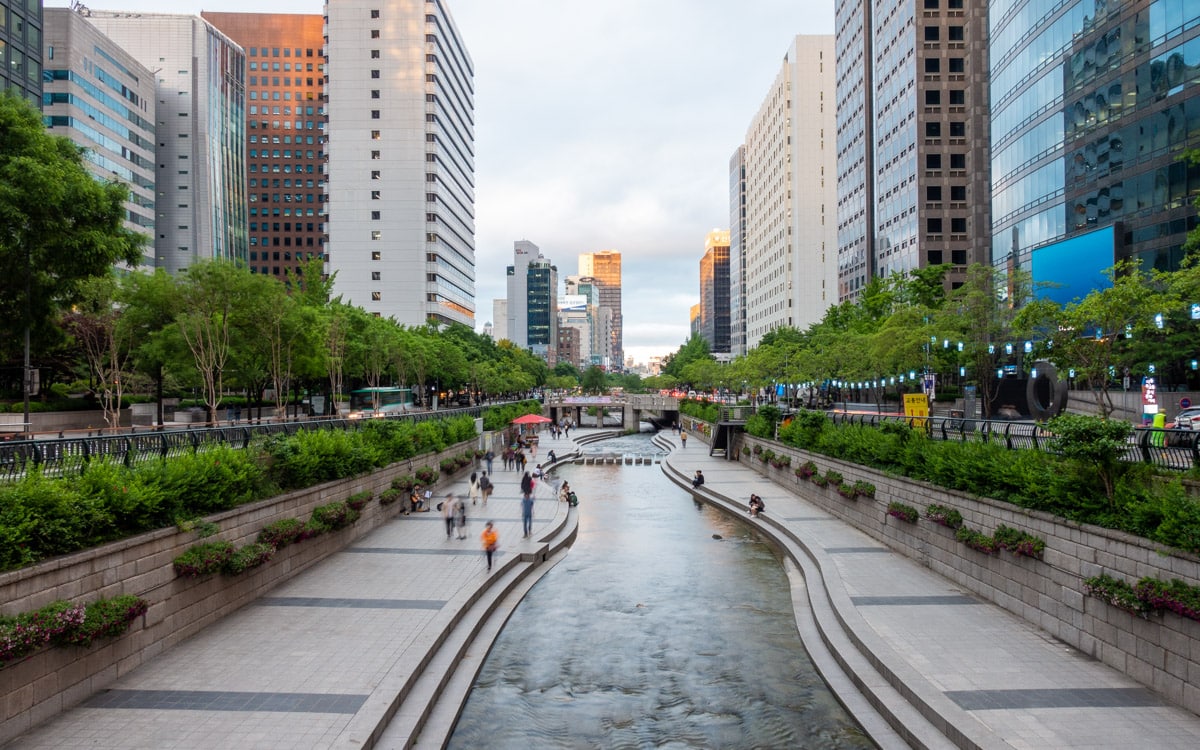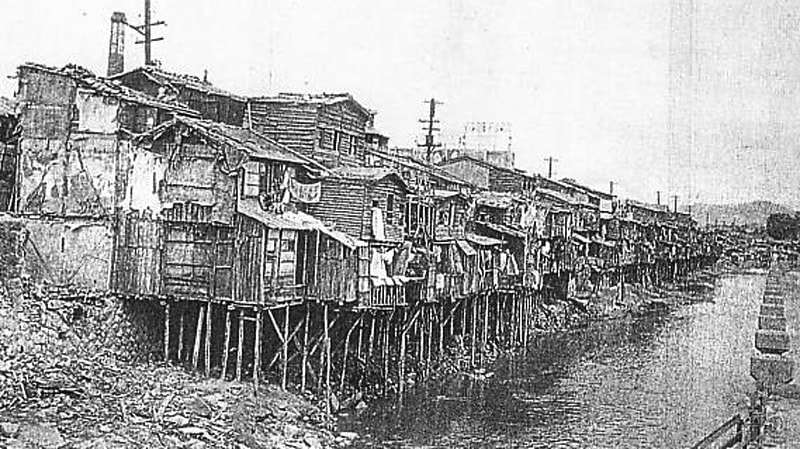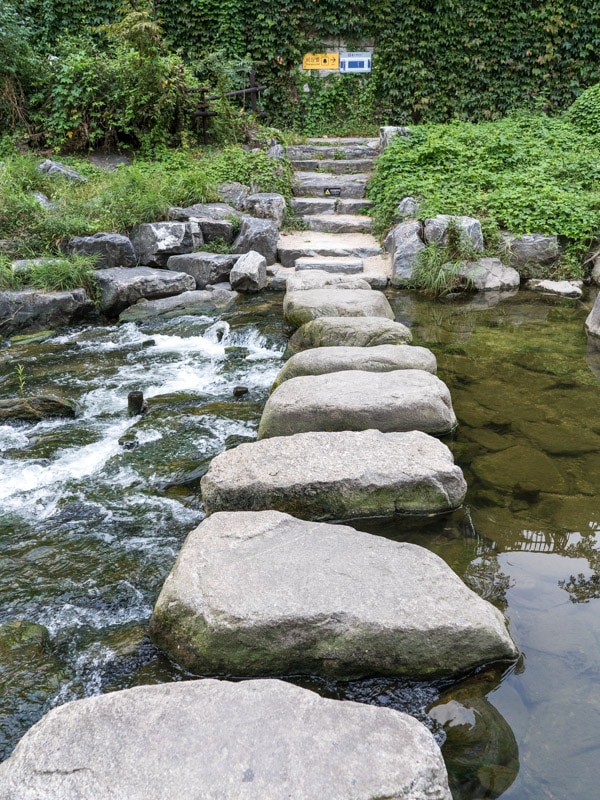
Cheonggyecheon Stream is an 8.4 kilometer (5.2 mile) waterway and public space that runs from west to east through the heart of downtown Seoul. During the Joseon Dynasty, the stream was known as Gaecheon, meaning open stream.
Over the years, the stream which brought national pride, was refurbished many times by the orders of multiple kings.
During the reign of King Taejong, who reigned from 1400 to 1418, the banks were strengthen and bridges were built.
Refurbishment work became a national project during the reign of King Yeonjo, who ruled from 1724 to 1776.
The stream was renamed to Cheonggyecheon during the Japanese occupation. During this time, attempts to cover it up were unsuccessful.

Makeshift houses were built on the banks of the water after the Korean War. Over the next few years, trash and waste from residents living in the area caused conditions to deteriorate and become an eyesore for the city.
In 1958, work started to convert the waterway into an elevated highway. In 1976, work was completed on the 5.6 kilometer (3.4 mile) concrete highway.
Table of Contents
Restoration

In July 2003, work began to remove the elevated highway and restore Cheonggyecheon to its original beauty. Work took over two years to complete which included pumping 120,000 tons of water back into the dry stream and restoring Gwangtonggyo Bridge and Supyogyo Bridge.
In September 2005, Cheonggyecheon was reopened to the public. This new landmark is now a popular destination for tourists and locals who want to experience natural beauty and wildlife in a large, urban city.

Cheonggyecheon Stream Hours
24 hoursAdmission
FreeHow to get to Cheonggyecheon Stream
Cheonggyecheon Stream can be accessed by multiple subway lines and subways stations.
Line 1
Stations : City Hall, Jonggak, Jongno 3-ga, Jongno 5-ga, Dongdaemun, Sinseoldong
Line 2
Stations : Euljiro 1-ga, Euljiro 3-ga, Euljiro 4-ga, Sindang, Sangwangsibni
Line 3
Stations : Jongno 3-ga
Line 4
Stations : Dongdaemun History & Culture Park
Line 5
Stations : Gwanghwamun
Map
Additional Resources
Book Recommendation: Fodor’s Seoul
While The Seoul Guide provides plenty of information about traveling to Seoul, sometimes it helps to bring a book with you on your journey. Want to visit Gwangjang Market, hike Bukhansan National Park, visit an ancient palace, or sing karaoke all night long? The book I always recommend is Fodor's Seoul, which provides expert recommendations including sights to see, restaurant reviews, maps, and essential trip-planning information for everything related to Seoul.
Learn more about Fodor's Seoul
Rakuten
Save money while exploring Seoul with Rakuten's cashback program. By booking hotels through Rakuten, visitors can earn cashback rewards and enjoy significant savings. Exclusive partnerships and deals make stays in Seoul more affordable, freeing up funds for attractions, dining, and other experiences. I use Rakuten for cashback on all of my hotel stays in Seoul.
If you sign up using the link below, you will get $30 cashback after your first purchase over $30.
Klook
Klook is a reliable online platform offering discounted tickets and reservations for attractions and services in Seoul. It covers theme parks, museums, transportation, WiFi, tours, and more. Travelers can save time and money by booking through Klook's user-friendly interface, with secure transactions and helpful customer support.
If you sign up using the link below, you will get $5 off your first order.
Learn more about KlookLast Updated on Dec 12, 2021